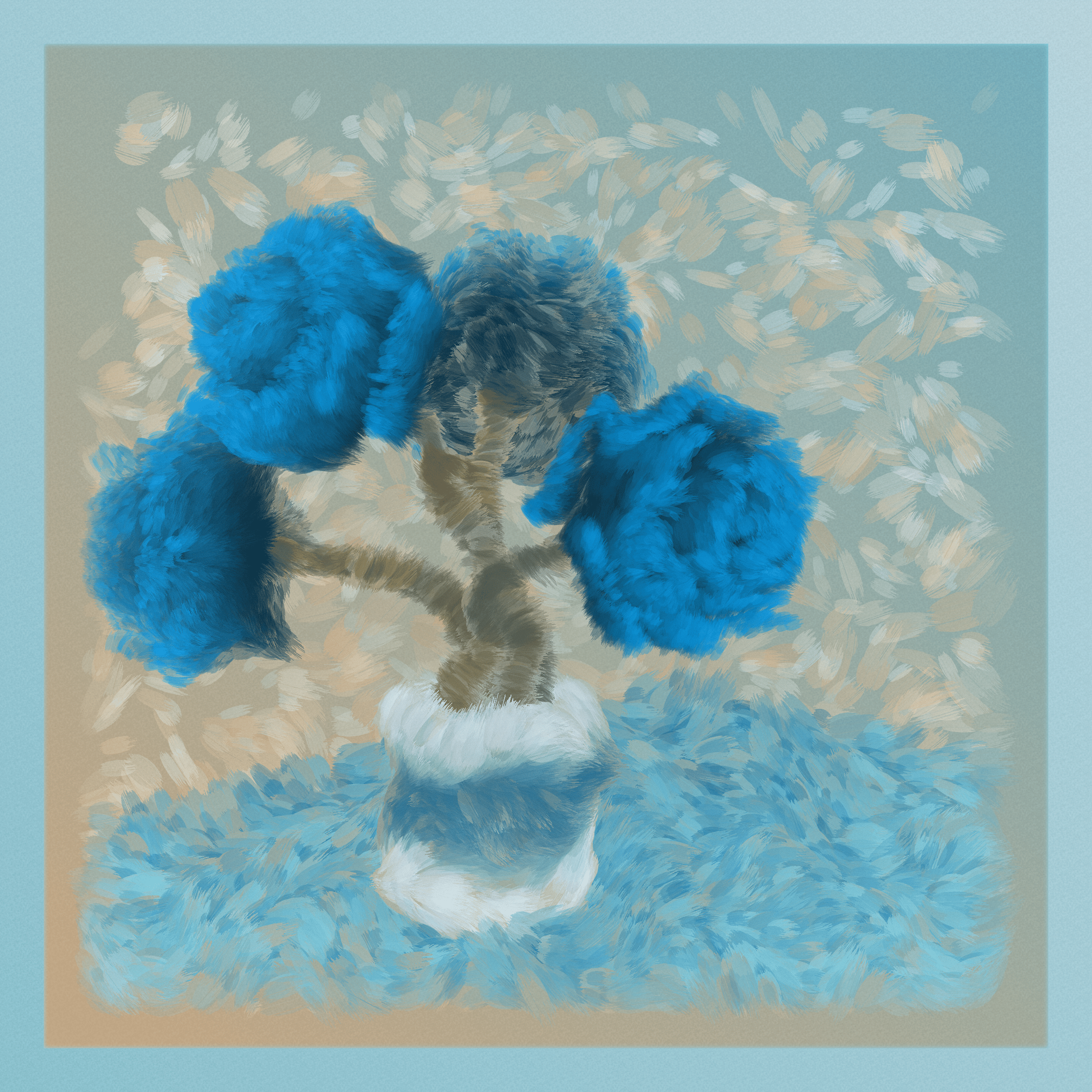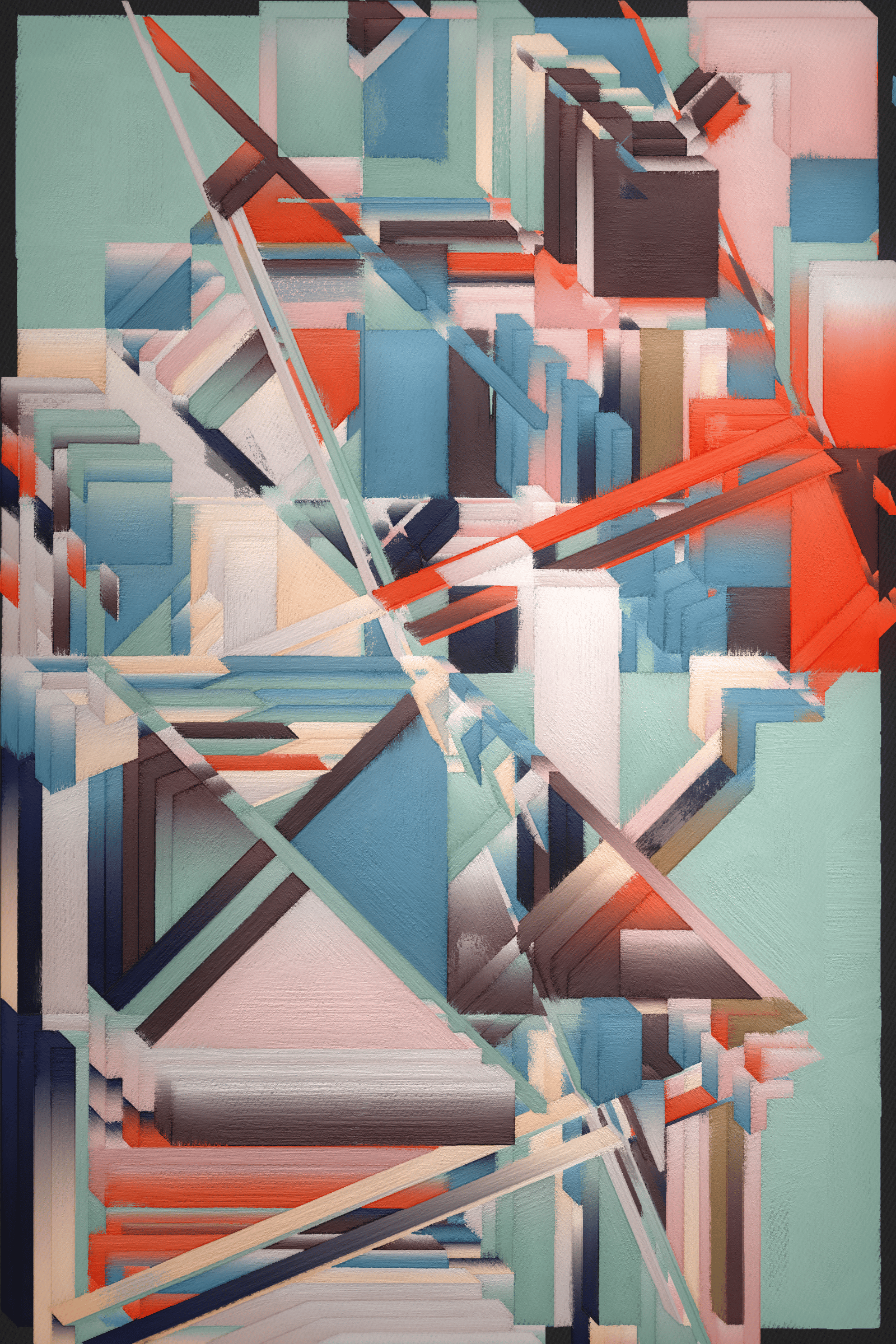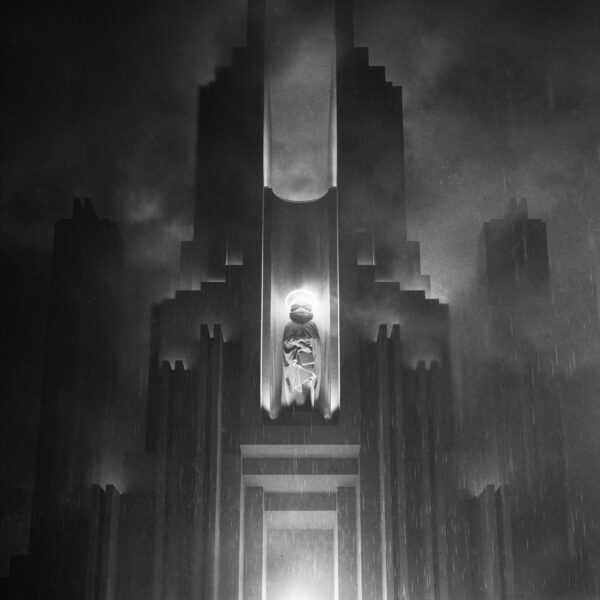Michael Kozlowski on Constructing His World
Michael Kozlowski is an American media artist and software developer. His primary interests are real-time graphics, mixed reality, and interactivity. Most of his work incorporates the input of video, photos, and physical interaction, which is processed and transformed in real-time. Prior to practicing art professionally, Micheal worked in the augmented reality industry as a software developer and graphics engineer, most recently for Microsoft Hololens. He attended the School of Cinematic Arts at the University of Southern California. In this interview, we dive into how Michael found the creative side of programming, how he uses the combined power of the left and right sides of his brain to create amazing work, and what construction has to do with crypto. Please note, this conversation has been edited for brevity and clarity.

Q: Have you always known you wanted to be an artist? What were your first experiences with art as an industry or profession?
Michael Kozlowski: Growing up, I drew and painted constantly–almost every day. I am not sure if I wanted to “be an artist” exclusively, but I suppose the idea has been fairly constant my whole life, and more recently, in adulthood, became more of a passion than a hobby. Both my mom and dad are small business owners, my mom is a graphic designer and my dad is a printer, so I have been around the commercial side of art practice most of my life. They always encouraged me to pursue a creative profession, which eventually I did. So in many ways I have always been an artist but not until recently have I referred to myself as an artist.
Q: You’ve talked to me before about your professional background and I’ve always found it interesting that you worked in construction for several years. How does that connect to what you are doing now?
Michael Kozlowski: Yes, my first jobs were all in construction. Throughout high school, for summer jobs and when I needed money, then afterwards as well. I was just a laborer, nothing fancy, doing what I was told and learning a bit about a few different trades. After high school I tried going to college a couple times in Montana and flunked out. I was not driven or passionate during that time of my life and was mixed up in drugs and a general, inescapable lethargy. I ended up moving to California for a new start. Since construction was the only thing I had experience with, it’s what I ended up doing while I got my shit together. I did like it though, despite it being a tough time in my life and a hard job. I’ve always loved working with my hands and have always loved building things. Starting with an empty lot, working really hard with a bunch of people, and then a year later seeing a building there is very rewarding, even for someone as unskilled and junior as I was. It’s not entirely dissimilar to what I do now: I still build things, create systems, combine smaller things into bigger things. And it also gave me a huge appreciation for how hard some people have to work, for a lot longer than I did.
After two and a half decades of not having any idea about what I wanted to do, it was the first time that I was like, "Wow, this is it."

Q: You eventually found your way to software engineering, how did that come about?
Michael Kozlowski: After working for about 5 years, I decided to give school another try. I started with night and summer school at a local community college while I worked. That lasted for a couple years. When I had enough credit, I applied to a bunch of places and ended up going to USC. I got into the film school, which was pretty wild. I didn’t expect to, at all, because it’s a very prestigious program. I still didn’t really know what I wanted to do with my life and felt like film was a good option because it involves so many different creative fields, and that eventually I would find something I liked. In order to graduate, we had to take some technical electives, outside of the major I was in. I coincidentally took a class that was an introduction to creative coding. It was my first experience with computer science and it completely caught me off-guard. I loved it. After two and a half decades of not having any idea about what I wanted to do, it was the first time that I was like, “Wow, this is it.” I asked the professor what I could do for work, how to make a living making generative art, and remember her saying, “Not much, just teaching really.” Which is pretty funny considering where I ended up. But she gave lots of great advice about the creative side of programming and recommended a bunch of classes in the CS department. So for the remainder of my time at USC, I almost entirely shifted away from film and entertainment to computer science.
Q: At that point in your life, were you like, “Hey, I’m going to be an artist?”
Michael Kozlowski: No, not at all really. I took all the fundamental CS courses I could and gained some skills that could allow me to get hired somewhere. While I was still in school, I got a software development internship at an AR company in LA called DAQRI. I got that job because I completely lied about knowing Unity3D on the application and I wasn’t quizzed on it during any of my interviews. My boss at DAQRI was Sterling Crispin (now, a fellow Art Blocks artist) and he kind of took me under his wing and didn’t tell anyone I was borderline useless when I started. He and a few other employees helped me learn and the summer turned out to be one the most educational crash-courses of my life. I ended up getting a full-time job offer there, and then spent the rest of my senior year as a full-time employee. That job further cemented my love of AR, and mixed reality in general, and it gave me the education that I couldn’t have even gotten in school if I’d tried.
I was doing a lot of technical art for DAQRI on more of the dry side, a lot of 3D UI and UX design with Sterling. On the more creative side I got to make a lot of VFX, like particle systems stuff for loading screens and things like that. So wherever I could squeeze some generative art skills in, I would. That passion was always kind of tailing me.
Q: What changed that moved you from software engineering back into a creative lane?
Michael Kozlowski: A few years later, after working for DAQRI for a while and then joining an AR start-up called Mira with some other USC grads, I got an R&D job at Microsoft. Which is what brought me up to Seattle. I got to use a lot of cutting-edge mixed reality technology and worked with many brilliant people–it was kind of a dream job for that stage in my career. The first year sort of felt like Willy Wonka or something. But after a while, some disillusionment started creeping in. I can’t really explain why or where it came from, but I started to miss making things on my own. Most of the work there, especially in R&D, doesn’t see the light of day. You and your team work very hard on something for a long time, but only portions of it graduate to the next level, or none of it at all. So that started to influence my morale I think.
When that feeling emerged, I started to make prototypes and artwork outside of work, creating things that used a lot of the skills and ideas that I was exposed to at my job, in a purely creative way out of the office. I made an Instagram, started posting my work, gained a small following, and started taking it more seriously. This was mostly in 2019 and 2020, so by the time NFTs hit the mainstream, I was very much in the right place at the right time: I was making digital and generative art every day, and had a small audience. Eventually in early 2021, I decided to start minting NFTs and then quit my job soon after.

I truly believe that generative art will be a defining genre, and everything I set out to make now I hope pushes the genre forward. I want everything I make to have a lasting impression on people, to show those who are interested in on-chain art the exceedingly wide range of what is possible.
Q: What was your red pill moment for crypto? How long had you been interested in crypto, how’d you fall down the rabbit hole?
Michael Kozlowski: The second school I dropped out of, this guy next to me in the dorms was super into crypto, that was the first time I heard about Bitcoin. I think it was 2010 or 2011, it’s a long time ago. So it was on my radar for a while. The first time I bought ETH was 2015, a hundred bucks worth or whatever. I’d generally been keeping up with it. I think also just being at tech companies, people talk about it more than just the general population. So I certainly was aware of its existence. I was aware of the fact that ETH was different from Bitcoin, and that Ethereum had programmatic applications, which was really interesting to me. I never really got into it other than buying small chunks here and there, purely speculatory, just as kind of a more technical way to gamble my money essentially.
But then I guess in 2020 or 2019, I was making stuff and putting it on social media like I said. Another part of my venture into creating art again was I’ve always had a fear of showing it to people. I’ve always made stuff but I’ve never really wanted to exhibit it or have it in front of people, because there’s just some weird self-consciousness there. So part of my exercise in taking my art practice more seriously was actually putting it out into the world. It was literally a New Year’s resolution I think. I had a bit of a following by the end of 2020, and a lot of the artists that I knew and loved on social media were starting to make NFTs. And so early in 2021, I was like, “Okay, I’m going to do this.” That’s when I minted my first NFT. JN Silva and ThankYouX were on my case about it for months before, trying to get me to mint something. We all followed each other on Instagram. That was an incredible time, we had no idea what we were doing or what was about to come. So I think that winter was kind of my red pill moment because everything that came afterwards was so beyond anything I could’ve imagined.
Q: Where do you find your inspiration? How do you think about your creative process as an artist?
Michael Kozlowski: That’s definitely an ongoing question and answer with me. I feel like I should have more of a process, and every project I try to do better, to be more critical, to be more theoretical. But I am not a trained artist, I come from years of corporate technology work, and that definitely affects how I go about making art. I’m very prototypical in the way I think about and plan my art. When I worked at Microsoft on the R&D team, we’d all have ideas, and we were supposed to write down a few every week, and then on Wednesday we’d have a team meeting where we’d talk about our favorite ideas, about what we wanted to do next. Sometimes it was an entirely new direction that a part of the team would go in, or just a single person would try to build something out, using a variety of new things that were going on at the time at Microsoft. And then at that meeting, we would decide which ideas were actually good, and if we wanted to devote resources to them. In a way, that’s kind of exactly what I do with art, too.
I have a running note on my iPhone of ideas that just pop in my head every few days. That can be from other artwork I see, from going on a hike and thinking about a natural process or phenomenon, they can come from me driving or taking a shower and just not even really thinking about art, but something just pops in my head. Seems to happen a lot when I’m not actually actively ideating, actually. Early on in my practice, when it was just a hobby and me and my Instagram, these would generally be loose and unrelated ideas having to do with a complex programming technique I was trying to grasp at the time, or an infusion of hardware that I was using at work and wanted to explore more from a creative perspective. Since becoming a full-time artist though, my ideas have started coming from a more critical place. I truly believe that generative art will be a defining genre, and everything I set out to make now I hope pushes the genre forward. I want everything I make to have a lasting impression on people, to show those who are interested in on-chain art the exceedingly wide range of what is possible.


